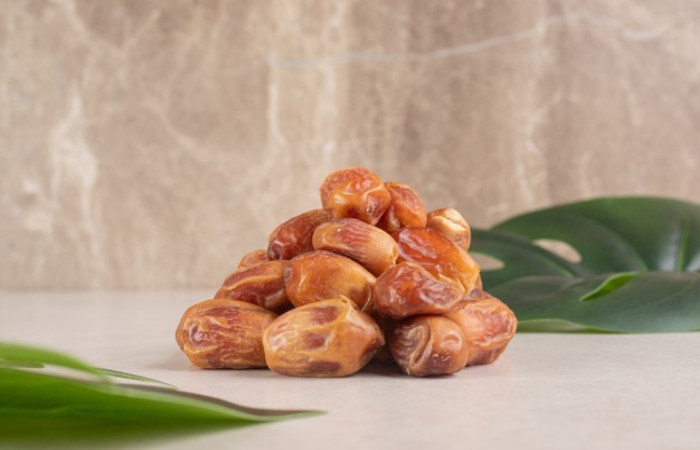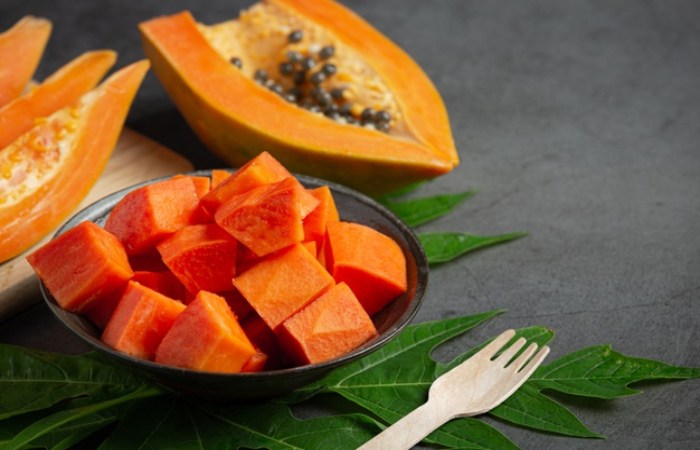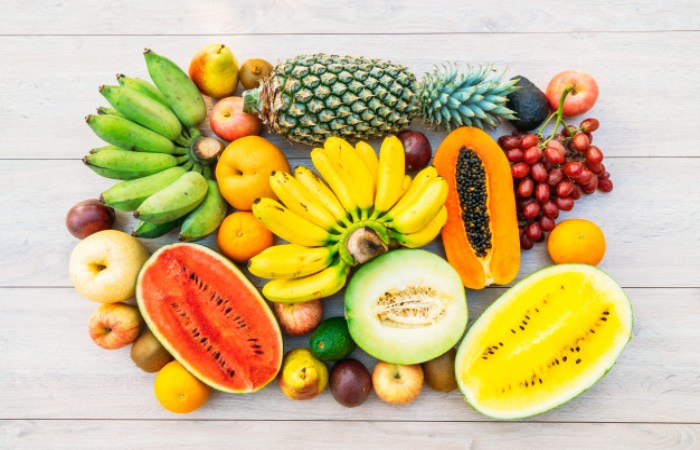The World Health Organization (WHO) applauds consuming at least 400 grams of fruits and vegetables a day about three pieces of fruit a day. Of these, at least one can consume natural juice since it contains less sugar.
Dates are the fruit with the most calories. Around 273 kcal per 100 grams, and the dry product does not contain added sugars. Despite these data, they are an important source of fiber, providing 36 percent of the RDA for an adult. It also highlights the high content of vitamin B6, responsible for producing neurotransmitters in the brain, muscle function, and increased energy production.

They release not so much by fats and proteins as by minerals such as magnesium, iron, and potassium. Which makes dates an ideal fruit for hypertensive patients and effective antioxidants due to their high concentration of selenium.
They are ultimate for those who practice sports, for the growth of children and young people. And even prevent aging by preventing the accumulation of free radicals called ROS.
Despite all these nutritional benefits, some experts recommend its use for weight loss or diabetic diets. This may be due to its composition of 65 percent sugars such as glucose and fructose, with this in mind.
“First, because fructose, which contains 50 percent, is a sugar with a high sweetening and satiating power and. Therefore, helps to reduce the intake of food. Which has a positive effect. they influence not only diabetes but also the development of obesity. ”
Papaya, The Fruit With Fewer Calories

On the other hand, the fruit with the least calories is papaya: only 13 kcal per 100 grams. Perhaps this is due to the low content of sugar, protein, and fat. It is an authoritative antioxidant thanks to its high content of vitamins C and A, without forgetting the contribution of potassium and magnesium.
Along with the beneficial properties of dates, it is a beneficial product for treating hypertension, diabetes and has anti-aging properties. Likewise, some of its compounds reduce blood glucose levels and reduce cholesterol and triglyceride levels, preventing obesity and promoting the regeneration of pancreatic cells.
Although it does not help in weight loss, it does not increase it either and prevents fluid retention despite the low amount of calories.
Therefore, after making sure that the comparison of the fruit with the highest and the lowest caloric intake is very similar to the health benefits. We can be sure that, despite the sugar content, this fruit only has nutritional benefits.
However, the daily intake of the recommended pieces of fruit is still not fully respected. Kakha recommends eating people with the most calories during the most metabolic period during weight-loss diets. Due to their sugar content. He explains that this time of day could be in the morning. Since our energy metabolism is more active, and this is a good time to eat fruits such as figs, grapes, or dates.

“Fruits with more calories and less water are less diuretic. And combining them with other fruits with a high diuretic content. Such as Grapefruit, Watermelon, or Pineapple can be very effective.”
“A study recently publish that points out that the inclusion of fruits or vegetables in the diet does not lead to weight gain.”
In addition to the aforementioned examples of dates and papaya, there are other fruits that, even with a high-calorie intake. Not only are not fattening but also have slimming properties, such as avocado or grapes. However, they always associate with weight. Another false myth is that the banana is fattening because it helps reduce the absorption of carbohydrates and has a satiety effect.
“These are some examples that show that the rule that more calories are synonymous with weight-promoting foods does not apply to fruits and vegetables.”
Therefore, following an effective diet to lose weight, there should be no fruit restriction. But they should be consumed in amounts proportional to our daily activity.






